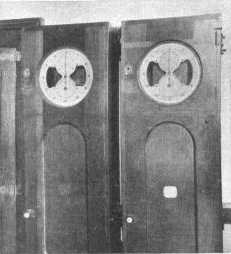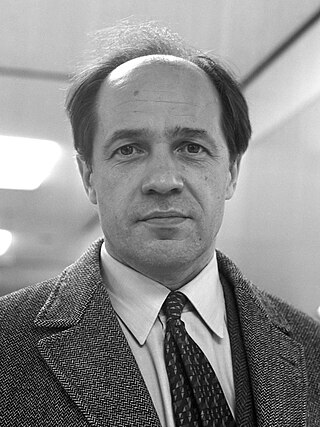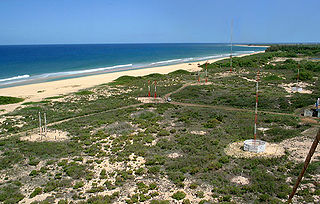
The BBC World Service is an international broadcaster owned and operated by the BBC. It is the world's largest external broadcaster in terms of reception area, language selection and audience reach. It broadcasts radio news, speech and discussions in more than 40 languages to many parts of the world on analogue and digital shortwave platforms, internet streaming, podcasting, satellite, DAB, FM and MW relays. In 2015, the World Service reached an average of 210 million people a week. In November 2016, the BBC announced that it would start broadcasting in additional languages including Amharic and Igbo, in its biggest expansion since the 1940s.

A time signal is a visible, audible, mechanical, or electronic signal used as a reference to determine the time of day.

A ringtone, ring tone or ring is the sound made by a telephone to indicate an incoming call. Originally referring to and made by the electromechanical striking of bells, the term now refers to any sound on any device alerting of a new incoming call—up to and including recordings of original telephone bells.

Pli selon pli is a piece of classical music by the French composer Pierre Boulez. It carries the subtitle Portrait de Mallarmé. It is scored for a solo soprano and orchestra and uses the texts of three sonnets of French symbolist poet Stéphane Mallarmé and single lines from two of his other poems. At over an hour, it is Boulez's longest work.
The Greenwich Time Signal (GTS), popularly known as the pips, is a series of six short tones broadcast at one-second intervals by many BBC Radio stations. The pips were introduced in 1924 and have been generated by the BBC since 1990 to mark the precise start of each hour. Their utility in calibration is diminishing as digital broadcasting entails time lags.
"Lillibullero" is a march attributed to Henry Purcell that became popular in England at the time of the Glorious Revolution of 1688.

WWVH is the callsign of the U.S. National Institute of Standards and Technology's shortwave radio time signal station located at the Barking Sands Missile Range, in Kekaha, on the island of Kauai in the state of Hawaii.
"The East Is Red" is a Chinese revolutionary song that was the de facto national anthem of the People's Republic of China during the Cultural Revolution in the 1960s. The lyrics of the song were attributed to Li Youyuan (李有源), a farmer from Shaanbei, and the melody was derived from a local peasant love song from the Loess Plateau entitled "Bai Ma Diao" 《白马调》, also known as "Zhima You" 《芝麻油》, which was widely circulated in the area around Yan'an in the 1930s. The farmer allegedly got his inspiration upon seeing the rising sun in the morning of a sunny day.
"Take the 'A' Train" is a jazz standard by Billy Strayhorn that was the signature tune of the Duke Ellington orchestra.

Norman Dello Joio was an American composer active for over half a century. He won a Pulitzer Prize in 1957.
The NBC chimes are a sequence of three tones played on National Broadcasting Company (NBC) broadcasts. Originally developed in 1927 as seven notes, they were standardized to the current three-note version by the early 1930s, and possibly as early as 1929. The chimes were originally employed as an audible programming cue, used to alert network control engineers and the announcers at NBC's radio network affiliates. They soon became associated with NBC programming in general, and are an early example of an "interval signal" used to help establish a broadcaster's identity with its audience.
The Prince of Denmark's March, commonly called the Trumpet Voluntary, was written around 1700 by the English composer Jeremiah Clarke, the first organist of the then newly-rebuilt St Paul's Cathedral.
This glossary of terms used in broadcasting is a list of definitions of terms and concepts related to both radio and television broadcasting, along with the industry in general.

Chimes of Freedom is a live EP by American singer-songwriter Bruce Springsteen. It was released in 1988 to support the multi-artist Human Rights Now! Tour in benefit of Amnesty International. This tour was announced near the end of a first-set radio broadcast during Springsteen's July 3, 1988, show in Stockholm, Sweden, after which Bob Dylan's "Chimes of Freedom" was performed. The performance of "Chimes of Freedom" on this EP peaked at number 16 on the Mainstream Rock charts in mid-late 1988.

Voice of Korea is the international broadcasting service of North Korea. It broadcasts primarily information in Chinese, Spanish, German, English, French, Russian, Japanese and Arabic. Until 2002 it was known as Radio Pyongyang. The interval signal is identical to that of Korean Central Television.

John Vincent Lawless Hogan, often John V. L. Hogan, was a noted American radio pioneer.
Swedish Rhapsody No. 1 is the subtitle of Midsommarvaka, a symphonic rhapsody by the Swedish composer Hugo Alfvén (1872–1960). Although it is only the first of three similarly named works, it is often simply called "the Swedish Rhapsody".











































